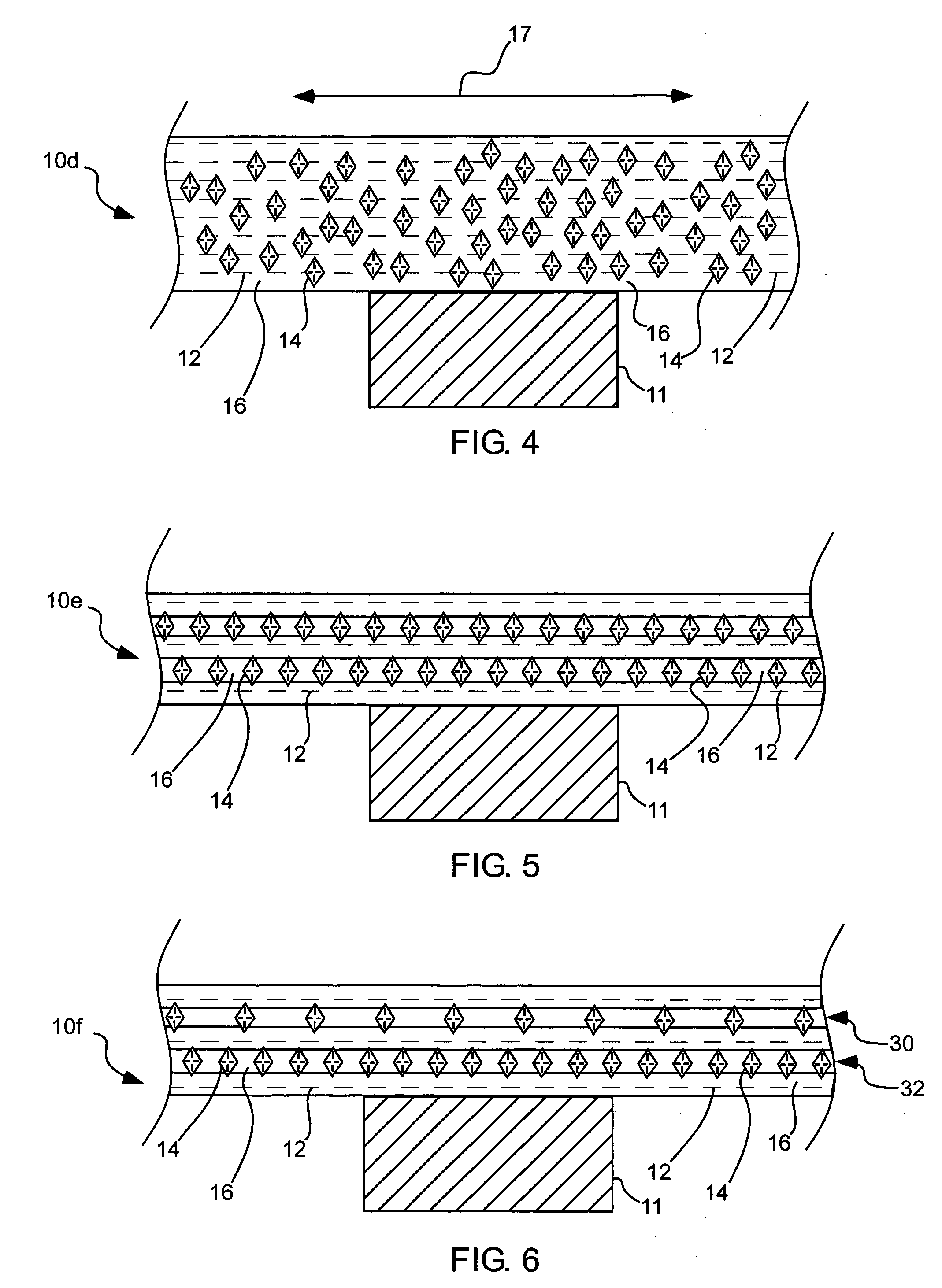Carbonaceous composite heat spreader and associated methods
a composite heat spreader and carbonaceous technology, applied in semiconductor devices, semiconductor/solid-state device details, instruments, etc., can solve the problems of heat dissipation, microcracks, and mismatch of thermal expansion capacity between metal and ceramics, and achieve the effect of reducing the melting point of metal matrix
- Summary
- Abstract
- Description
- Claims
- Application Information
AI Technical Summary
Benefits of technology
Problems solved by technology
Method used
Image
Examples
example 1
[0075] Preformed sheets of diamond and carbon fiber were obtained having a suitable organic binder which retained the diamond and carbon fiber in sheet form. The preformed sheets (or “performs”) were stacked in a steel die sprayed with a boron nitride release agent. Molten Al—Si, with a melting point of about 577° C., was pressed by a steel plunger until the alloy infiltrated through the mold. The molten alloy, which wetted both the diamond and the carbon fiber, filled substantially all voids between the diamond and carbon fiber to create a consolidated mass heat spreader.
[0076] The organic binder used with both the diamond and the carbon fiber was either vaporized or oxidized, or decomposed, during the aluminum infiltration stage. The organic binder was reduced to carbon residue that did not have an adverse affect on the final product.
[0077] The measured thermal conductivity of the resultant heat spreader was about 600 W / mK and the measured coefficient of thermal expansion was ab...
example 2
[0078] Preformed sheets of a mixture of diamond and carbon fiber were obtained having a suitable binder used to retain the diamond and carbon fibers in sheet form. The preforms were stacked in a suitable mold after which molten Al—Si was infiltrated into and through the mold. The molten alloy, which wetted both the diamond and the carbon fiber, filled substantially all voids between the diamond and the carbon fiber to create a consolidated mass heat spreader. The binder used was either vaporized or oxidized, or decomposed during the aluminum infiltration stage.
[0079] The measured thermal conductivity of the resultant heat spreader was about 600 W / mK and the measured coefficient of thermal expansion was about 7.5 PPM / C.
PUM
| Property | Measurement | Unit |
|---|---|---|
| temperatures | aaaaa | aaaaa |
| temperature | aaaaa | aaaaa |
| melting point | aaaaa | aaaaa |
Abstract
Description
Claims
Application Information
 Login to View More
Login to View More - R&D
- Intellectual Property
- Life Sciences
- Materials
- Tech Scout
- Unparalleled Data Quality
- Higher Quality Content
- 60% Fewer Hallucinations
Browse by: Latest US Patents, China's latest patents, Technical Efficacy Thesaurus, Application Domain, Technology Topic, Popular Technical Reports.
© 2025 PatSnap. All rights reserved.Legal|Privacy policy|Modern Slavery Act Transparency Statement|Sitemap|About US| Contact US: help@patsnap.com



